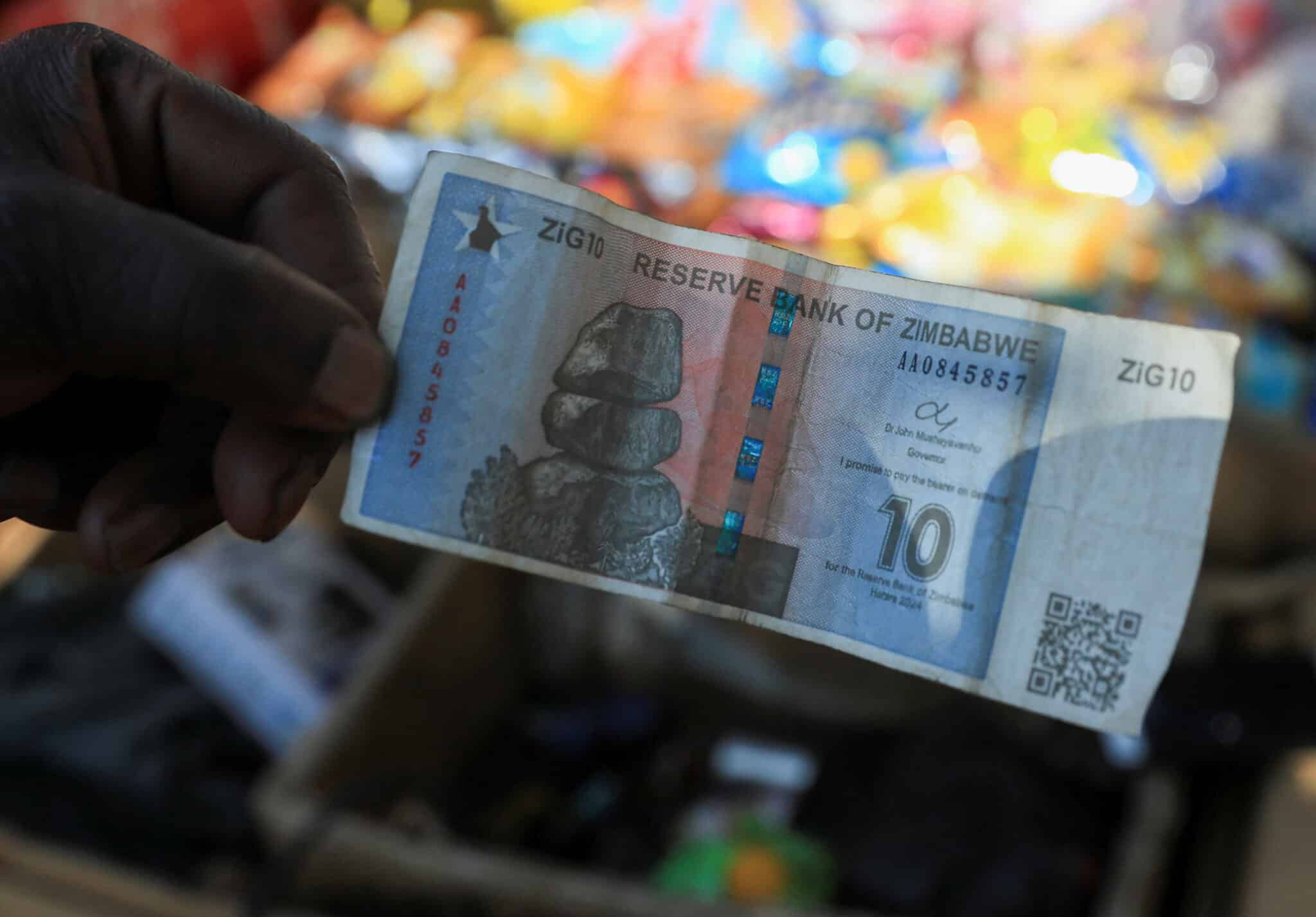Zimbabwe Pursues Fiscal Reform To Restore Confidence
Zimbabwe targets a 1.8% FY26 deficit to anchor IMF reengagement; risk premia track EMB while gold prices (XAUUSD) support FX inflows. Zero net central-bank financing and ≥95% revenue outturns by mid-2026 would validate disinflation and currency stability.

Zimbabwe’s decision to target a 1.8 percent of GDP budget deficit in fiscal year 2026 is best read as a credibility anchor ahead of IMF reengagement and arrears work-out rather than a cosmetic pledge. Treasury’s framework sketches expenditures around ZIG 335.6 billion and revenues near ZIG 309.9 billion—roughly 17 percent of GDP—implying a financing gap of about ZIG 25.7 billion.
That lands inside prior guidance to hold the shortfall below 3 percent and, if delivered without central-bank financing, would mark a break from fiscal dominance that previously destabilised prices and the exchange rate. The policy signal is cash-based budgeting, tighter control of quasi-fiscal operations, and transparent funding composition that leans on market issuance rather than monetary expansion.
Mechanics determine credibility. Hitting 1.8 percent requires concurrent gains in revenue efficiency and spending discipline. Zimbabwe’s tax-to-GDP ratio sits below 18 percent versus a Sub-Saharan median near 20–22 percent, reflecting a narrow formal base and compliance gaps in an economy where informality accounts for more than half of employment.
Authorities plan to broaden VAT coverage, harden e-invoicing, and tighten border enforcement to curb leakages. On the outlay side, prioritisation means curbing unbudgeted subsidies, containing wage drift, and ring-fencing capital spending through stricter procurement. The arithmetic is tight: a 10 percent revenue under-performance would add roughly 0.3–0.4 percent of GDP to the deficit unless offset by deeper cuts or higher domestic borrowing, reintroducing rollover risk and crowding out private credit.
The macro backdrop is improving but fragile. After drought and power constraints tempered growth in 2024, Treasury projects about 6 percent in 2025 and 5 percent in 2026, led by agriculture and mining. That profile underwrites revenue elasticity but is vulnerable to rainfall, electricity supply, and commodity cycles. Inflation, which surged into triple digits in 2023, has decelerated under tighter reserve-money control and the introduction of the ZiG.
A deficit contained below 2 percent alongside zero central-bank financing would reinforce disinflation and help anchor exchange-rate expectations. Any relapse into quasi-fiscal lending or arrears accumulation—particularly in the energy sector—would widen pricing spreads in goods and FX markets and erode nominal gains.
Sovereign risk premia will price deeds, not targets. A sustained sub-2 percent shortfall, transparent financing that favours market bills over money creation, and steady cash management would compress risk in Zimbabwe’s offshore proxy instruments alongside broader emerging-market hard-currency benchmarks such as EMB.
Currency stability under the ZiG reflects tighter liquidity and reduced speculative demand; it remains fragile given low reserve cover measured in months, not quarters, and sensitivity to imported fuel and fertiliser prices. Export flows offer partial insulation. With gold a core earner, favourable pricing (XAUUSD) stabilises dollar inflows, while scaling battery-mineral value chains could widen non-gold receipts if investment and power availability align.
The fiscal-monetary feedback loop is the hinge. A credible fiscal anchor lowers risk premia and funding costs, improving the interest-growth differential on the debt trajectory and reducing pressure on the central bank. Conversely, revenue slippage or spending drift forces issuance into a shallow domestic market, lifts yields, and suppresses private-sector credit formation.
Composition of adjustment matters: clearing arrears and curbing unbudgeted subsidies delivers a larger disinflation dividend than compressing capex, while better tax administration raises permanent revenue without hiking rates into a narrow base. Aligning these levers with prospective IMF quantitative tests on reserve money, primary balance, and net domestic financing would convert a numerical goal into a policy regime.
Markets will judge through mid-2026 data. If the deficit prints below 2 percent of GDP, revenues meet at least 95 percent of target, and net central-bank financing remains zero on a rolling basis, monthly inflation should settle in low single digits and local-currency bill yields should drift lower in real terms as expectations compress.
A stable currency band without exceptional measures, plus visible progress on an arrears roadmap, would strengthen the case for an IMF-supported programme by 2027 and gradual re-access to concessional windows. Failure on these markers would reprice risk quickly, widen spreads versus frontier peers, and force a defensive tightening that trades growth for nominal stability.





